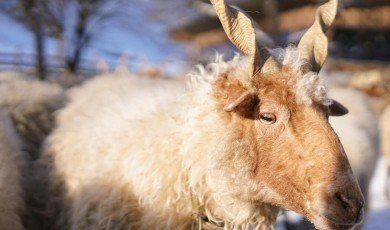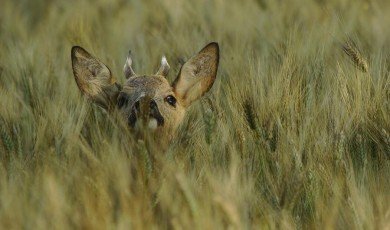
The natural world hides countless stories that unfold every day, far from the noise of human life. Deep in forests, under the sea, and across open plains, animals live extraordinary lives filled with communication, intelligence, and emotion. What we once believed to be instinct alone has turned out to be a complex tapestry of behavior, strategy, and connection.
Communication Beyond Words
Animals have always communicated — but the more we study them, the clearer it becomes that their “languages” are far more sophisticated than once imagined. From elephants that use low-frequency rumbles to talk across kilometers, to whales whose songs can carry across entire oceans, animal communication rivals human interaction in both emotion and structure.
Scientists have discovered that dolphins use signature whistles to identify each other by name, while prairie dogs can describe predators with astonishing detail — distinguishing between a “tall human in blue” and a “short human in yellow.” Every call, sound, and movement in nature carries meaning, a form of translation that bridges survival and social connection.
In many ways, studying these patterns of animal communication mirrors the work of human linguists and interpreters. The patience, precision, and understanding needed to interpret an elephant’s rumble or a bird’s call are not unlike the skills required in over the phone interpretation services, where clarity and context can change the outcome of a conversation entirely.
The Intelligence of Instinct
Wild animals live with purpose. Wolves form families built on loyalty and cooperation, where every member has a role. Crows use tools, plan ahead, and even hold “funerals” for their dead. Octopuses display creativity, playfulness, and problem-solving abilities that rival mammals.
Such discoveries challenge the idea that humans stand alone in intelligence. Instead, they reveal a spectrum of awareness that stretches across species. Instinct, once seen as a mechanical response, now appears deeply intelligent — a blend of learning, memory, and emotion. These revelations remind us that intelligence doesn’t always look like ours. It might fly, swim, crawl, or roar — but it communicates, remembers, and adapts in ways we are only beginning to understand.
Emotional Lives Hidden in the Wild
Animals not only think, they feel. Recent studies have shown that many species experience joy, grief, empathy, and love. Elephants mourn their dead, carrying bones for days. Orcas have been observed showing signs of depression after losing a calf. Even rats, often dismissed as simple creatures, have demonstrated compassion — freeing trapped companions instead of taking food for themselves. These emotions are not projections of human imagination. They are real, measurable responses, shaped by evolution to strengthen social bonds. In their expressions, we find mirrors of our own emotional world — loyalty, fear, affection, and courage.
The Language of Survival
Every movement in nature has meaning. A chameleon’s color change, a bee’s dance, a lion’s posture — all serve as vital communication tools. Each signal determines whether an animal eats, mates, or survives another day.
Consider migratory birds. Using a combination of magnetic fields, the sun’s position, and memory of landscapes, they navigate thousands of kilometers with precision. Their ability to communicate direction and timing ensures entire flocks move as one, often across continents.
Nature is filled with these invisible messages. It’s a living network where each call, color, and gesture carries information. In this way, the animal kingdom functions like a vast multilingual community — one that depends on understanding as much as survival. It’s a fascinating parallel to how human societies rely on communication and services such as over the phone interpretation services to connect across languages and distances.
Cooperation and Culture in the Wild
Some species pass down knowledge from generation to generation, creating what scientists call animal culture. Orcas teach their young specific hunting techniques; chimpanzees develop tool traditions unique to each group; and birds in certain regions sing distinct dialects — accents of their own making.
These patterns show that learning and teaching are not exclusive to humans. Culture, in its simplest form, is alive in the animal world. Cooperation ensures not only survival, but also the growth and continuity of these traditions.
In coral reefs, for example, cleaner fish and larger predators form unlikely partnerships: one provides hygiene, the other protection. On the African plains, zebras and wildebeests migrate together, their strengths complementing one another. Such relationships reveal a truth that spans all life forms — that collaboration, not competition, often defines success in nature.
How Humans Fit Into the Story
Our relationship with wild animals is ancient and evolving. Once hunters and observers, we are now stewards of ecosystems that depend on balance and respect. Understanding the hidden lives of wild creatures is not only an act of curiosity, but of responsibility. When we protect forests, oceans, and grasslands, we preserve the intricate systems of communication and emotion that make the animal kingdom thrive. Each species lost is not just a number, but a story — a voice silenced forever.
Technology has given us powerful tools to understand these lives more deeply. From satellite tracking to AI-based sound analysis, we can now decode animal behaviors that once seemed mysterious. As our knowledge grows, so does our empathy — and our realization that humans are not separate from nature, but part of it.
The Future of Coexistence
The more we learn about wild animals, the more we see ourselves reflected in them. They teach us about resilience, cooperation, and connection. Their stories remind us that every sound, glance, and movement carries meaning — even when we fail to understand it.
In the end, discovering the secret lives of wild animals is not just about studying nature. It’s about rediscovering our place within it. When we listen closely, we realize that the natural world has always been speaking to us — patiently, beautifully, and in its own remarkable language.
Most Read
Featured Posts







